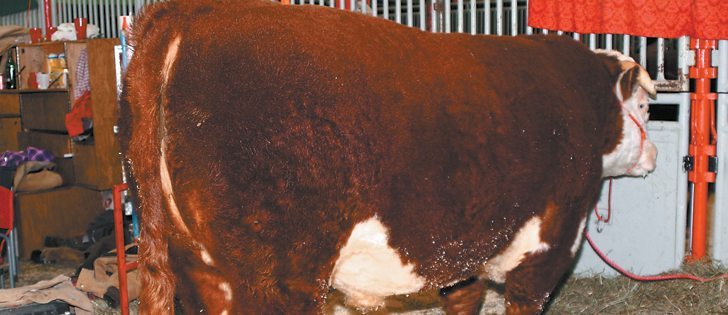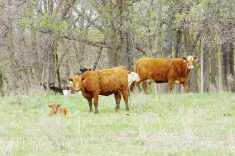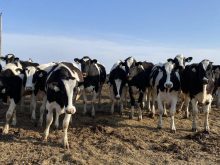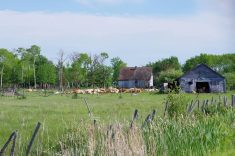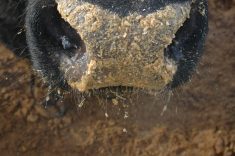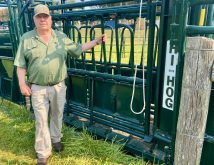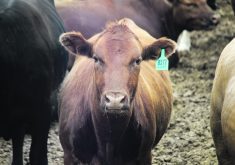Calgary Bull Sale | Top bull at Alberta event sells for $19,000; average sale equals $5,322
This year’s Calgary Bull Sale may have been smaller than past years, but the 114-year-old institution still carries weight among cattle breeders.
This year, 122 Angus, Gelbvieh and Hereford bulls sold for a total of $649,325 to average $5,322.
For Ken Rutledge of Hardisty, Alta., the March 6 sale was a compliment for the farm, which has been raising purebred Herefords since 1945.
He topped the sale with RUT 10N Ribstone Lad 26Z, which sold for $19,000 to Dallas Farms of Bowden, Alta., and Conway Herefords of Foremost, Alta.
Read Also

Beef check-off collection system aligns across the country
A single and aligned check-off collection system based on where producers live makes the system equal said Chad Ross, Saskatchewan Cattle Association chair.
“There were lots of people looking at him but you never expect that amount,” he said.
“This bull went to two very good breeders. It is a compliment to have those two people buy this bull.”
The bull was judged as a long, thick beast without being extreme.
Rutledge has come to the Calgary sale since 1989 because he said it promotes what he has to offer on the farm, where he keeps 125 purebred Hereford cows and 60 registered Angus cows.
“If you don’t come, you start to disappear. With purebred bulls, you have to have them out there so people can see them,” he said.
In recent months commercial beef calves have fetched record prices so Rutledge is optimistic people will be looking to buy new bulls and replacement heifers.
“I don’t think we will see the bull market catching up quite as fast yet, but there will be big prices, especially if calves stay where they are now,” he said.
An added component in recent years is a commercial replacement heifer show and sale.
Sheldon and Shannon Archibald of Irma, Alta., had the grand champion female pen, which they feel is indicative of their heifer replacement program based on Hereford-Angus crosses.
Archibald sells purebred and commercial cattle at SS Cattle Co., along with his family, which includes five children.
“This is prestigious and kind of elite so we are pretty proud of that,” he said.
He runs an extensive artificial insemination program, which includes Hereford and Angus sires on his British cows to get the kind of females he thinks will work for commercial producers.
He is looking for easy fleshing, feed efficient cattle. To help improve his program, he places home-raised bulls on test at Lakeland College at Vermilion, Alta.
He wants the performance statistics, but the cattle have to be structurally sound.
“Eye appeal is still important to breeders but a lot of guys are looking at the EPDs (expected progeny differences) and birthweight and weaning weight,” he said.
“We want a balance between what is structurally sound and what you see in the numbers,” he said.
A show like Calgary promotes the female side of an operation so producers can see how the bull batteries perform on Alberta ranches.
“People don’t have time to come to my place and look at my cows.”
Archibald raises about 100 purebreds and has 150 black baldie commercial cows.
He also works off the farm as a health and safety consultant to the oil and gas industry but said the cattle business keeps him on the ranch through good and bad times.
“We’ll hang onto the cow’s tail and get drug through and maybe we will hold onto it for the next generation,” he said.




